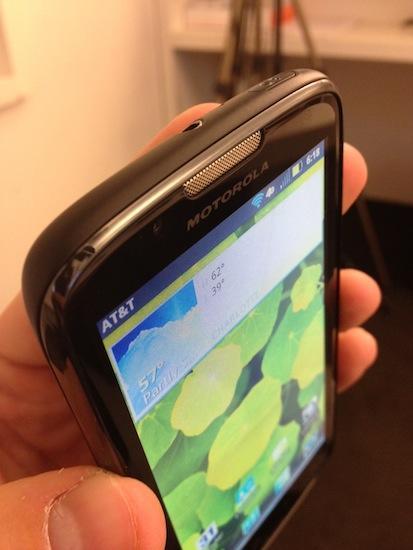
I'd carry the Motorola Atrix 2 without hesitation, but the specifications aren't the primary appeal to me. On specs alone, the Atrix 2 is a packed device; it builds on the formula of the Motrorola Atrix 4G that was released earlier in the year. It packs a dual-core 1 GHz TI OMAP processor, 4.3-inch qHD display (with no PenTile technology this time around), 8-megapixel camera with 1080p HD video recording, a front-facing camera, reasonably large 1,735 mAh battery, and Android 2.3.5 with Motorola's custom user interface. It also offers the same great accessory ecosystem that its predecessor enjoyed.
But specs aren't the primary appeal, as far as I'm concerned; the real benefit of the Atrix 2 is the price. In a world where "high-end" and "$199.99" (or higher) seem to go hand-in-hand, the Atrix 2's $99.99 price point makes this device a steal. It'll face some stiff competition from the newly reduced iPhone 4 (also $99.99), but overall, I think it's a well-equipped device that's positioned to sell well.
I've had some time to tinker with the Atrix 2, so without further delay, some impressions:
- Atrix 2 swaps out its predecessor's 1 GHz dual-core NVIDIA Tegra 2 chip for a TI OMAP processor, and so far, I haven't been able to tell a difference. Applications open fast and system-heavy things load without a problem.
- It's running Android 2.3.5 with Motorola's custom user interface. No real changes here from the Atrix 4G, though you'll notice that any mention of MOTOBLUR (logos, related apps, etc.) is completely gone. It comes with the usual AT&T bloatware, though most of it can be removed. AT&T also allows for the sideloading of applications now, so Android fans can get their non-Market apps loaded up without rooting the device.

- Hands-down, the biggest improvement is the display. It's a 4.3-inch qHD screen, so it's larger than the original device, but it ships without PenTile technology. I'll spare most of the technobabble when it comes to the benefits and downsides to having the tech, but in a nutshell, it makes the display brighter and consumes less battery life. Conversely, it makes the display incredibly pixelated. PenTile is out this time around, and the display looks so much better. Colors are rich, and while the display may not be as bright, overall image quality is a welcome improvement.
- Atrix 2 gets a bump in the camera department to 8-megapixels, along with the ability to shoot video in 1080p. Picture quality has been decent so far, and while there's a physical camera button on the side of the device, you can't hold it to focus. Additionally, video quality has been impressive - check out my 1080p sample here. Colors were crisp and vibrant, and audio quality was excellent, with impressive noise cancellation (it was very windy).

- Battery capacity has dropped from 1,930 mAh to 1,735 mAh, but I've found performance to be relatively decent. With moderate use encompassing calling, text messaging, downloading apps, and surfing the net, I made it roughly 11 hours before the phone powered down. It won't win any awards for longevity, but it's on par with other high-end Android phones on the market.
- You'll notice the revised "4G" indicator in place of the "H+," but that's not the only 4G change here. Atrix 2 supports HSPA+ 21, so the phone can reach a theoretical peak of 21 Mbps. Before you get all excited, you'll never see those theoretical speeds on AT&T (or any other carrier, for that matter), but in testing, data speeds were pretty impressive. So far, I've averaged 2-5 Mbps on the download, and 1-3 Mbps on the upload. It's no match to T-Mobile's HSPA+ 42 Mbps service, but it gets the job done.
Much more to come, so stay tuned. While you're waiting, be sure to have a look at the unboxing!